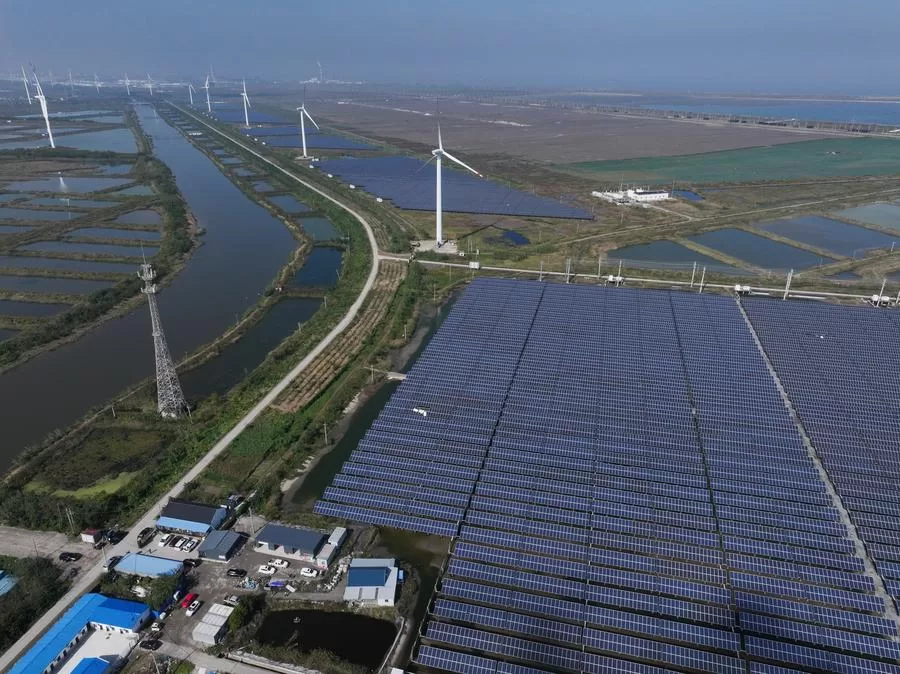China has taken a significant step in renewable energy innovation with the launch of its largest integrated solar-hydrogen farm. The Rudong offshore photovoltaic-hydrogen energy storage project is located in the tidal flat region of Rudong County, Jiangsu Province. The project commenced operations on December 31, 2024. This is according to its developer, Guohua Energy Investment Co., Ltd., under CHN Energy Investment Group.
China has been leading the world in large scale solar hydrogen integrated plants. Rudong takes the number one spot from Kuqa Green Hydrogen Plant in Xinjiang that has a capacity of 300 megawatts.
The Songyuan Hydrogen Energy Industrial Park project when completed will become the world’s largest integrated green hydrogen, ammonia, and methanol production facility. Setting anotehr first for China.
Xinhuanet reports that the project spans 287 hectares (4,300 mu) and the comprehensive energy initiative combines the following:
- photovoltaic power generation,
- hydrogen production,
- energy storage, and;
- hydrogen refueling.
Capacity
The Rudong offshore photovoltaic-hydrogen energy storage project is a first for China. The project has an installed capacity of 400 megawatts and features a 60 MW/120 MWh energy storage facility, a 220 kV onshore booster station, and a hydrogen production station capable of generating 1,500 standard cubic meters of hydrogen per hour and refueling up to 500 kilograms daily.
Once fully operational, the facility is expected to produce 468 million kilowatt-hours of electricity annually, reducing reliance on fossil fuels by saving 151,000 tonnes of coal each year. The environmental benefits are substantial, including annual reductions of approximately 309,400 tonnes of carbon dioxide, 562.6 tonnes of sulfur dioxide, and 1,125.3 tonnes of nitrogen dioxide.
Read Also The World’s Largest Offshore Solar Farm in China: Covers Over 1,200ha of Ocean Surface
Advanced photovoltaic technologies
The project advanced photovoltaic technologies and intelligent control systems. It also optimizes energy conversion and storage efficiency. The integration of hydrogen production through water electrolysis enhances overall energy utilization and supports the stability of the regional power grid. This innovative approach also bolsters peak-shaving capacity, ensuring a more reliable electricity supply.
Beyond energy production, the Rudong project incorporates coastal ecological management, harnessing the unique tidal flat resources of the region to create a sustainable and efficient energy ecosystem. It represents a critical milestone in China’s transition to a low-carbon energy structure and aligns with its commitment to achieving carbon neutrality.
The Rudong project not only advances renewable energy capabilities but also underscores China’s leadership in pioneering integrated energy solutions that address environmental and energy challenges simultaneously.

